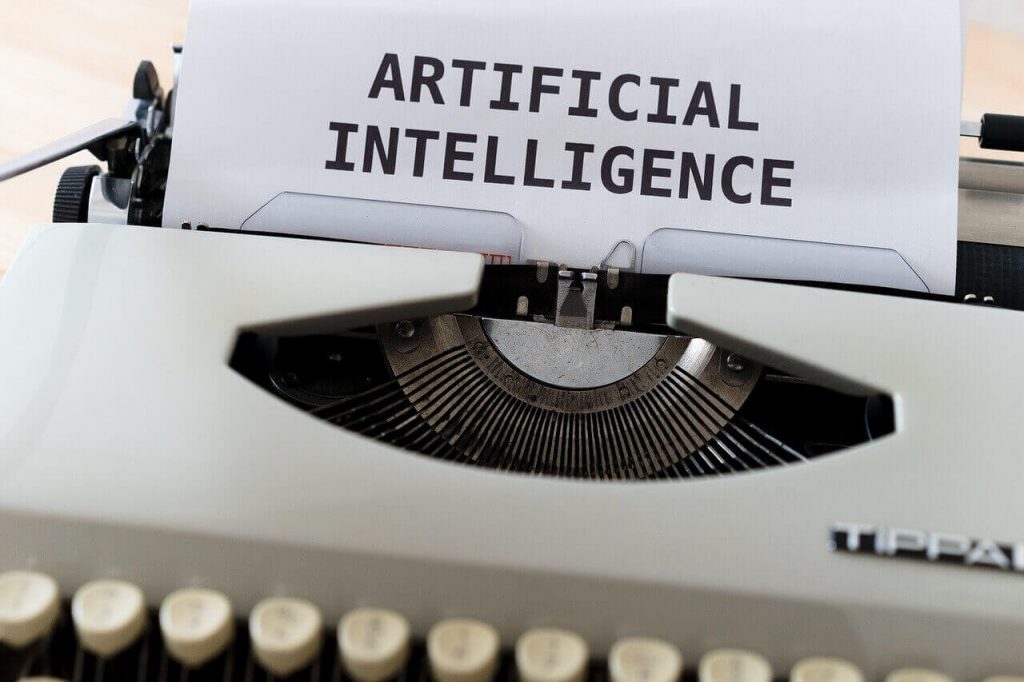Artificial Intelligence (AI) is not just a buzzword anymore—it’s a transformative force that’s reshaping every facet of our lives. In the realm of education, AI is breaking new ground, especially for those who teach math. Imagine a world where every student’s learning experience is personalized, where routine administrative tasks are automated, and where real-time insights into student progress are readily available. This is the promising future that AI for math teachers is bringing into the classroom.

Gone are the days of one-size-fits-all instruction. With AI, math educators can now tailor their teaching strategies to meet each student’s individual needs, making learning more engaging and effective. AI tools can adapt to each learner’s pace and offer instant feedback and support, not just enhancing math education but revolutionizing it.
In this article, we dive into the exciting possibilities that AI holds for math teachers. We’ll explore how AI can transform the learning environment, from personalized instruction and intelligent tutoring systems to data-driven insights that track student progress. Additionally, we’ll introduce you to a curated selection of AI tools and explore their features and practical applications.
As we embark on this journey into the world of AI, prepare to see how these innovations can energize your teaching approach and provide your students with a richer, more interactive learning experience. The future of math education is here—let’s discover how AI can make it extraordinary.
The Key Concepts Behind AI

AI is offering the educational landscape a wide array of innovative solutions that go beyond traditional teaching methods. And in order to harness the technology effectively in the classroom, especially for math instruction, it’s essential to understand the core concepts and benefits of this technology.
At its core, AI refers to the simulation of human intelligence in machines programmed to think and learn like humans. These systems use algorithms and data to perform tasks that typically require human intelligence, such as problem-solving and decision-making. AI technologies often include machine learning, where systems improve their performance through experience and data analysis, and natural language processing, which allows machines to understand and interact with human language.
The key concepts behind this advanced technology are:
- Machine Learning (ML): This subset of AI focuses on developing algorithms that enable computers to learn from and make predictions based on data. In a classroom setting, ML can analyze students’ performance data to offer personalized learning recommendations or detect patterns that might indicate learning challenges.
- Natural Language Processing (NLP): NLP allows machines to understand, interpret, and respond to human language. For math teachers, this means AI tools can assist in answering student queries, explaining complex concepts, or even generating tailored practice problems.
- Data Analytics: AI utilizes data analytics to process and analyze vast amounts of educational data. This capability helps teachers track student progress, identify trends, and make informed decisions about instructional strategies. By analyzing student interactions and performance, AI can offer insights into areas where students may need additional support.
Understanding the fundamental aspects of AI equips math teachers with the knowledge to leverage these tools effectively. As we delve deeper into how AI can specifically enhance math instruction, this foundational understanding will help in making informed decisions about integrating AI into the classroom.
The Role of AI for Math Teachers

AI in education is designed to analyze student data, identify patterns, and make predictions about learning needs. These systems can provide tailored feedback, recommend resources, and even adapt learning pathways based on individual student performance. Here’s a more detailed explanation of the benefits AI brings to the educational sector, particularly in teaching mathematics.
1. Personalized Learning: Adapting to Individual Student Needs
One of the most significant advantages of AI is its ability to provide personalized learning experiences. Traditional teaching methods often follow a one-size-fits-all approach, which can leave some students struggling while others may not be sufficiently challenged. AI-powered tools, however, can analyze each student’s learning style, strengths, and weaknesses to create customized learning paths.
For instance, AI systems can assess a student’s performance in real-time and adjust the difficulty of math problems accordingly. If a student excels in algebra but struggles with geometry, the AI can offer more practice and resources specifically tailored to geometry while advancing algebra content. This level of personalization helps ensure that each student receives the right support at the right time, fostering a more effective learning environment.
2. Intelligent Tutoring Systems: Providing Tailored Support and Feedback
Intelligent Tutoring Systems (ITS) use AI to mimic the support of a personal tutor. These systems offer real-time assistance and feedback based on the student’s interactions and responses. Unlike traditional classroom settings where personalized attention is limited, ITS can provide individualized help to every student, regardless of class size.
If a student makes an error in solving a math problem, an AI-powered tutor can analyze the mistake and provide targeted hints or explanations. This immediate feedback helps students understand where they went wrong and how to correct their errors, leading to a deeper understanding of math concepts and improved problem-solving skills.
3. Data-Driven Insights: Monitoring Progress and Identifying Areas for Improvement
AI’s ability to process and analyze large volumes of data provides valuable insights into student performance. By tracking metrics such as problem-solving speed, accuracy, and participation, AI tools can generate detailed reports on each student’s progress.
These data-driven insights enable teachers to identify patterns and trends in student performance. If multiple students are struggling with a particular concept, the teacher can use this information to adjust their lesson plans and provide additional resources. Additionally, AI tools can help in identifying students who may need extra support or enrichment, allowing for timely interventions and targeted instructional strategies.
4. Automating Administrative Tasks: Saving Time on Grading and Lesson Planning
AI also offers significant advantages in reducing the administrative workload for math teachers. Routine tasks such as grading assignments, managing class schedules, and tracking attendance can be automated using AI systems. This automation not only saves time but also reduces the potential for human error.
With AI handling these administrative tasks, teachers can focus more on engaging with their students and refining their instructional methods. AI can quickly grade multiple-choice tests and provide instant feedback, allowing teachers to spend more time on interactive teaching and less on administrative duties.
5. Enhancing Student Engagement: Interactive Learning Experiences
AI-driven tools often include interactive elements such as gamified learning activities, virtual simulations, and adaptive problem sets. These features make math learning more engaging and enjoyable for students. Unique activities such as AI-powered educational games can turn complex math problems into fun challenges, motivating students to practice and learn more effectively.
Interactive learning experiences also allow students to explore mathematical concepts in a hands-on manner, deepening their understanding and retention of the material. By incorporating these engaging elements into math instruction, teachers can create a more stimulating and participatory learning environment.
AI’s transformative potential in math teaching extends beyond personalization and efficiency; it also enhances the overall learning experience. As educators embrace these advancements, they can unlock new possibilities for effective teaching and meaningful student engagement, setting the stage for a more dynamic and impactful approach to math education.
20 AI Tools for Math Teachers

The integration of AI into math education has brought about a range of innovative tools designed to support and enhance teaching and learning. Here, we explore an extensive list of AI tools that can transform math instruction, providing detailed descriptions of their features, benefits, and real-world applications.
1. Eduaide
- Overview and Features: Eduaide is a comprehensive AI-driven educational platform that offers personalized math tutoring and instructional support. It uses machine learning algorithms to analyze student performance and tailor content to individual needs. Features include adaptive learning pathways, interactive practice problems, and detailed progress reports.
- Use Cases: Eduaide is ideal for creating customized learning experiences for students. For example, if a student struggles with quadratic equations, Eduaide will provide additional practice and instructional resources specifically targeting that area. Teachers can also use Eduaide to track student progress and adjust their teaching strategies based on data-driven insights.
2. MagicSchool
- Overview and Features: MagicSchool offers AI-powered tutoring solutions with a focus on interactive and engaging math instruction. The platform includes features such as real-time problem-solving assistance, gamified learning modules, and virtual tutoring sessions.
- Use Cases: MagicSchool can be used to supplement classroom instruction with interactive lessons and practice problems. Teachers can assign MagicSchool’s gamified math challenges as homework, providing students with a fun and motivating way to practice their skills. The virtual tutoring feature also offers additional support for students who need extra help outside of regular class hours.
3. Khan Academy’s AI Tools
- Overview and Features: Khan Academy’s AI tools integrate seamlessly with its vast library of educational content, providing personalized learning experiences and real-time feedback. Key features include adaptive practice exercises, interactive video lessons, and progress tracking.
- Use Cases: Khan Academy’s AI tools are valuable for differentiating instruction in the classroom. Teachers can use the platform to assign practice exercises tailored to each student’s skill level and monitor their progress through detailed reports. The interactive video lessons also offer a supplementary resource for reinforcing math concepts covered in class.
4. Socratic by Google
- Overview and Features: Socratic is an AI-powered app that helps students with math homework by providing step-by-step explanations and solutions. It uses natural language processing to understand and respond to student queries, offering detailed explanations and additional resources.
- Use Cases: Socratic is particularly useful for providing students with immediate assistance on math homework. They can take a photo of a math problem, and Socratic will analyze it and generate a detailed solution. This feature helps students understand their mistakes and learn how to solve similar problems in the future.
5. Photomath
- Overview and Features: Photomath uses AI to solve math problems by analyzing photos of handwritten or printed equations. It provides step-by-step solutions and explanations, making it an invaluable tool for homework help and concept reinforcement.
- Use Cases: Photomath can be used both in and out of the classroom to support student learning. For example, students can use Photomath to check their work and understand the steps involved in solving problems. Teachers can also use the app to demonstrate problem-solving techniques and discuss common errors.
6. IXL Math
- Overview and Features: IXL Math is an adaptive learning platform that offers personalized practice exercises and detailed analytics. It uses AI to adjust the difficulty of questions based on student performance and provides real-time feedback.
- Use Cases: IXL Math is effective for differentiating instruction and providing targeted practice. Teachers can assign specific skill areas for students to focus on, and the platform will adapt the exercises based on their progress. The detailed analytics help teachers identify areas where students need additional support and adjust their teaching strategies accordingly.
7. DreamBox
- Overview and Features: DreamBox provides an adaptive math curriculum that adjusts to each student’s learning pace and style. It includes interactive lessons, real-time feedback, and detailed progress reports.
- Use Cases: DreamBox is useful for personalized instruction and monitoring student progress. Teachers can use the platform to create customized learning paths for students and track their development through detailed reports. The interactive lessons also engage students and make learning math more enjoyable.
8. Matific
- Overview and Features: Matific offers a range of interactive math games and activities designed to enhance conceptual understanding and problem-solving skills. It uses AI to tailor content to each student’s learning needs.
- Use Cases: Matific can be used to supplement traditional instruction with interactive and engaging activities. Teachers can assign Matific’s games as homework or use them in the classroom to reinforce math concepts. The AI-driven personalization ensures that each student receives appropriate challenges and support.
9. Cerego
- Overview and Features: Cerego utilizes AI-powered spaced repetition to enhance long-term retention of math concepts. The platform customizes review schedules based on each student’s learning patterns and performance.
- Use Cases: Cerego is valuable for helping students retain math concepts over time. Teachers can use the platform to create customized review schedules and monitor student progress. The spaced repetition approach ensures that students revisit concepts at optimal intervals for improved retention.
10. Desmos
- Overview and Features: Desmos is an interactive graphing calculator and math visualization tool. It allows students to explore mathematical concepts through dynamic graphs and visualizations.
- Use Cases: Desmos is useful for teaching complex math concepts such as functions, graphs, and equations. Teachers can use it to create interactive lessons and visual demonstrations, helping students develop a deeper understanding of mathematical relationships.
11. Algebrator
- Overview and Features: Algebrator provides AI-driven algebra assistance, offering step-by-step solutions and explanations for algebraic problems. It includes a range of interactive tutorials and practice exercises.
- Use Cases: Algebrator is ideal for supporting students who need extra help with algebra. Teachers can use the tool to provide additional practice and explain algebraic concepts in a clear and structured manner.
12. Mathway
- Overview and Features: Mathway offers real-time problem-solving assistance for a wide range of math topics. It provides detailed solutions and explanations for students’ queries.
- Use Cases: Mathway is a versatile tool for homework help and concept reinforcement. Students can use Mathway to check their work and understand the steps involved in solving math problems. Teachers can also use it to demonstrate problem-solving techniques and provide additional support.
13. Mathspace
- Overview and Features: Mathspace provides adaptive learning resources and interactive problem sets. It uses AI to adjust the difficulty of questions and offer real-time feedback.
- Use Cases: Mathspace is effective for personalized practice and monitoring student progress. Teachers can assign specific problem sets and track students’ performance through detailed reports. The adaptive nature of the platform ensures that students receive appropriate challenges and support.
14. Noon Academy
- Overview and Features: Noon Academy offers AI-powered tutoring and collaboration features. It includes interactive lessons, live tutoring sessions, and social learning tools.
- Use Cases: Noon Academy is useful for providing additional support and fostering collaborative learning. Teachers can use the platform to offer live tutoring sessions and encourage students to collaborate on math problems. The social learning tools also enhance student engagement and motivation.
15. Knewton
- Overview and Features: Knewton provides adaptive learning technology that personalizes math instruction based on student performance. It includes detailed analytics and real-time feedback.
- Use Cases: Knewton is valuable for differentiating instruction and providing targeted practice. Teachers can use the platform to create customized learning paths and monitor student progress through detailed analytics. Its adaptive nature ensures that students receive appropriate challenges and support.
16. GoConqr
- Overview and Features: GoConqr offers a range of interactive learning resources, including quizzes, flashcards, and mind maps. It uses AI to personalize content and track student progress.
- Use Cases: GoConqr can be used to create engaging and interactive learning materials for math instruction. Teachers can use the platform to design quizzes and flashcards that reinforce key concepts, and track students’ progress through detailed reports.
17. Tinkercad
- Overview and Features: Tinkercad provides a 3D design and modeling platform with math integration features. It allows students to explore geometric concepts through hands-on design projects.
- Use Cases: Tinkercad is ideal for teaching geometry and spatial reasoning. Teachers can use the platform to create interactive design projects that help students visualize and understand geometric concepts. The hands-on nature of the tool also enhances student engagement and learning.
18. Mathigon
- Overview and Features: Mathigon offers an interactive and engaging math curriculum with a focus on exploration and discovery. It includes a range of interactive content and activities.
- Use Cases: Mathigon is useful for creating engaging and interactive lessons that foster exploration and discovery. Teachers can use the platform to provide students with interactive content and activities that enhance their understanding of mathematical concepts.
19. Zearn
- Overview and Features: Zearn provides a personalized math curriculum with interactive lessons and real-time feedback. It uses AI to tailor instruction to each student’s learning needs.
- Use Cases: Zearn is effective for personalized instruction and tracking student progress. Teachers can use the platform to create customized learning paths and monitor student performance through detailed reports. The interactive lessons also enhance student engagement and learning.
20. Explaineverything
- Overview and Features: Explaineverything is an interactive whiteboard tool that allows teachers and students to create dynamic math lessons and explanations. It includes features for drawing, recording, and collaborating.
- Use Cases: Explaineverything is valuable for creating interactive math lessons and explanations. Teachers can use the tool to draw and record math concepts, and students can use it to collaborate and share their work. The interactive nature of this tool enhances student engagement and learning.
10 Best Practices for Implementing AI in Math Instruction

Integrating AI into math instruction offers the potential to greatly enrich teaching practices and student learning experiences. However, to fully realize these benefits, it’s essential to implement AI tools thoughtfully and strategically. Here are some best practices for seamlessly incorporating AI into your math curriculum:
1. Align AI Tools with Learning Objectives
Ensure that the AI tools you select are aligned with your specific learning objectives and curriculum goals. Choose tools that complement your teaching strategy and address the particular needs of your students. To achieve this, map out your curriculum objectives and identify which AI tools best enhance these goals. This alignment ensures that the tools will effectively support the areas you aim to improve in your math instruction.
2. Start Small and Scale Gradually
Introduce AI tools to your classroom in a gradual manner to manage the transition effectively. Begin with one or two tools to understand their functionality and impact on student learning. This phased approach allows you to monitor their effectiveness and gather feedback, which will guide your decision-making process for scaling up. By piloting these tools in a specific area of your curriculum, you can assess their effectiveness based on student performance and feedback before expanding their use.
3. Provide Training and Support
Proper training is crucial for maximizing the benefits of AI tools. Ensure that both you and your students are well-acquainted with the tool’s features and functionalities. Offer clear guidance and support to help everyone become comfortable with the new technology. Organize training sessions and provide instructional materials to facilitate a smooth transition and effective use of the AI tools.
4. Monitor and Evaluate Effectiveness
Regularly assess how AI tools are impacting student learning and instructional efficiency. Evaluate their effectiveness in meeting educational goals and identify areas that might need improvement. Establish a system to track the impact of AI tools, including monitoring student performance metrics and collecting feedback, to make data-informed decisions about their continued use and potential adjustments.
5. Ensure Data Privacy and Security
AI tools often handle sensitive student data, so it is essential to ensure they comply with data privacy regulations and protect this information. Familiarize yourself with the privacy policies of the tools and address any concerns with the providers. By reviewing and confirming the data privacy and security measures of the AI tools, you ensure that student information is safeguarded in accordance with relevant regulations.
6. Foster Student Engagement and Ownership
Encourage students to actively engage with AI tools and take ownership of their learning journey. Promote a growth mindset by highlighting how technology can support and enhance their educational experience. Create opportunities for students to explore AI tools, set personal learning goals, and track their progress, which will help boost their engagement and motivation.
7. Integrate AI with Traditional Teaching Methods
AI tools should complement rather than replace traditional teaching methods. Use AI to enhance and support your existing instructional practices, ensuring that the integration enriches the overall learning experience. By developing a balanced approach, you can use AI tools to supplement your conventional teaching strategies and offer additional support to students.
8. Collaborate with Colleagues and Share Best Practices
Engage with fellow educators to gain valuable insights into the effective use of AI tools. Sharing your experiences and learning from others can uncover best practices and innovative approaches. The best way to do this is to participate in professional development opportunities and collaborative discussions to exchange ideas and refine your approach to using AI in math instruction.
9. Stay Informed About Technological Advancements
Keep yourself updated on the latest developments in AI to ensure you are utilizing the most current and effective tools available. Regularly explore new technologies and advancements in AI that could benefit your teaching practices. By staying informed through conferences, professional journals, and industry news, you can continuously enhance your use of AI in the classroom.
10. Encourage a Growth Mindset Towards AI
Promote a positive attitude towards AI by emphasizing its role in supporting and enhancing learning. Encourage both students and colleagues to view AI as a valuable resource that complements the human element of teaching. Fostering a culture of experimentation and continuous improvement can help you integrate AI tools into your teaching practice effectively.
By adopting these best practices, you can successfully integrate AI tools into your instruction, improving teaching methods and providing students with a more engaging and personalized learning experience.
3 Considerations in Using AI for Math Instruction

While AI tools offer significant benefits for enhancing math instruction, their integration also presents several challenges. Understanding these potential pitfalls and considerations is crucial for effectively implementing AI in the classroom.
1. Potential Pitfalls of Relying on AI
Over-reliance on AI can lead to several issues in the educational environment. One major concern is the risk of diminishing critical thinking and problem-solving skills among students. When students rely too heavily on AI tools for answers, they might miss out on developing essential cognitive skills required for understanding mathematical concepts deeply.
Additionally, AI tools may sometimes provide incorrect or incomplete solutions due to limitations in their algorithms or data. It is crucial for teachers to actively supervise and guide students, ensuring that AI tools are used as aids rather than replacements for fundamental learning processes.
2. Addressing Equity and Accessibility Issues
Equity and accessibility are significant concerns when integrating AI tools into education. Not all students have equal access to technology, and disparities in resources can exacerbate existing inequalities. For instance, students in underfunded schools or those from low-income backgrounds might not have the same access to advanced AI tools as their peers.
To address these issues, schools must strive to provide equitable access to technology and resources. This could involve investing in infrastructure, providing devices to students in need, and ensuring that AI tools are affordable or available at no cost. Teachers should also be aware of these disparities and seek to use AI tools that can be accessed through various platforms, including mobile devices, to reach a broader range of students.
3. Overcoming Resistance to Technology
Resistance to technology is another challenge that educators may encounter. Some teachers and students may be skeptical about the effectiveness of AI tools or may feel uncomfortable with changing established teaching methods. Overcoming this resistance requires thoughtful implementation and ongoing support. Professional development opportunities can help educators build confidence in using AI tools, demonstrating their benefits through successful case studies and practical examples.
Additionally, involving students in the process and showcasing how AI can enhance their learning experience may help alleviate concerns and build acceptance. Creating a supportive environment where feedback is encouraged and addressed can also ease the transition and promote a positive attitude towards AI integration.
By being aware of these challenges and proactively addressing them, you can better navigate the complexities of incorporating AI into math instruction, ensuring that the technology serves as a valuable resource rather than a source of additional obstacles.
Harnessing the Power of AI for Math Teachers!

The integration of AI into math instruction represents a transformative opportunity for educators and students alike. AI tools, from personalized tutoring systems to interactive problem solvers, have the potential to enhance learning experiences, provide tailored support, and streamline instructional tasks. By understanding and effectively implementing AI tools, math teachers can offer more engaging, personalized, and efficient instruction that addresses individual student needs and supports their academic growth.
However, it is essential to approach the adoption of AI with a balanced perspective. While it offers numerous advantages, it also presents challenges and addressing them through will ensure that AI serves as a valuable aid in the educational process.
As AI technology continues to evolve, its role in education will likely expand and deepen. Embracing these advancements with a clear understanding of their implications and maintaining a focus on enhancing student learning will help educators harness the full potential of AI for math teachers.
Ready to elevate your math instruction with cutting-edge AI tools? Explore the range of AI solutions we’ve mentioned in this article to transform your teaching approach and provide your students with an enriched learning experience. Take the first step towards integrating AI into your classroom and watch your students thrive in their math journey!




